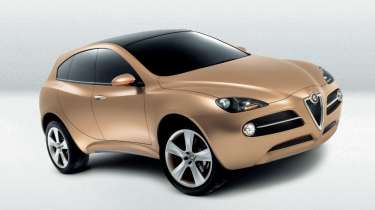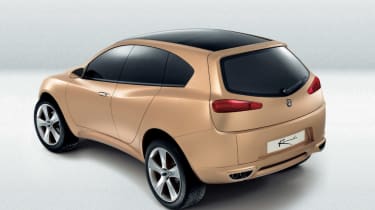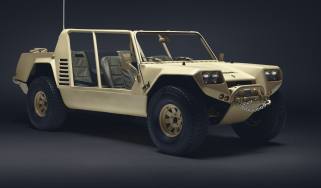Concept cars - the Alfa Romeo Kamal
With a new Alfa Romeo SUV on the way, we take a look at the Italian maker's last attempt
2016 could be the year that Alfa Romeo officially unveils a production SUV. At the upcoming Paris motor show, the Italian firm is expected to display the Stelvio - a crossover model using the highly competent underpinnings of the latest Alfa Romeo Giulia saloon. It would not, however, be the first time Alfa has previewed such a model.
Back in 2003, Alfa Romeo’s model range looked a great deal healthier than it does today. Its competitor in the C-segment was the pretty 147, and the even prettier 156 gave Alfa a BMW 3-series fighter, albeit one nearing the end of its life. The GTV and Spider were also old but still looked stunning (despite a botox-like facelift that year), the 166 was all the better for a nip-tuck to remove its squint, and the stylish 156-based GT had just made its debut.
While no model was class-leading, every model was better than what Alfa had offered for the past two or more decades and both the 147 and 156 were selling in respectable numbers.
The one thing the Alfa range lacked, at least in economic terms, was an SUV. The crossover market was already gathering pace in 2003 and it was quickly becoming apparent that traditional saloons like the 156 and 166 were waning in popularity.
What better time then to unveil a car that combined the characteristics buyers were warming to - a high driving position and confident all-weather ability - to the maker’s undoubted knack for churning out an attractive car?
The Kamal - a word that means ‘perfection’ and ‘beauty’ in some Middle Eastern dialects and has references to the colour red in Sanskrit - was the fruits of that labour. And while the concept shocked - in 2003, Porsche was still under fire from purists for the Cayenne - the execution looked on-the-money.
It had the all-important ‘Busso’ V6 for a start, 3.2 litres in capacity (like the 147 and 156 GTA models) and tuned to 250bhp, with power sent to all four wheels through a Torsen differential. Who knows what kind of horrendous economy such a combination might have achieved, but the sound would have been wonderful, and thankfully Alfa hasn’t entirely abandoned the concept of a multi-cylinder crossover - the Stelvio is expected to use six-pot petrol and diesel units.
Other aspects of the Kamal’s engineering matched contemporary Alfas like the 156. The suspension was double wishbone both front and rear, a fully independent design that allows careful control of wheel geometry and is therefore ideal for fine-tuning the handling.
Yet at 4350mm long, it was shorter than a 156 and at 1620mm high, it would sit slightly below something like a Mercedes-Benz GLC today. The production Stelvio will surely be larger than the Kamal, echoing the industry trend, but it makes the concept seem pleasingly compact.
Whether Alfa Romeo had at that time the capabilities to create a competitive crossover is open to debate. Contemporary Alfas were often well-received at launch but rarely had staying power next to ever-improving rivals. Would the Kamal have had persistent appeal? And would 2003 consumers have accepted a high-rise Alfa as they might today?








